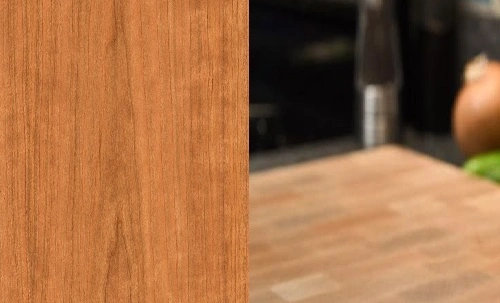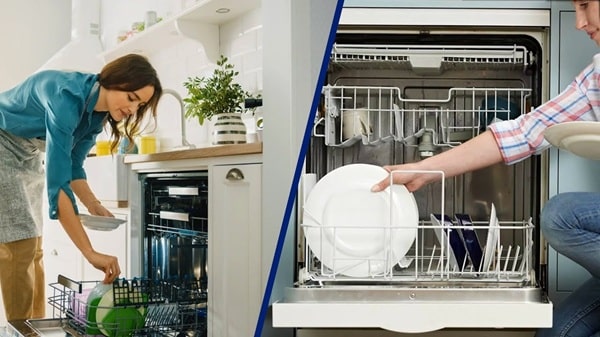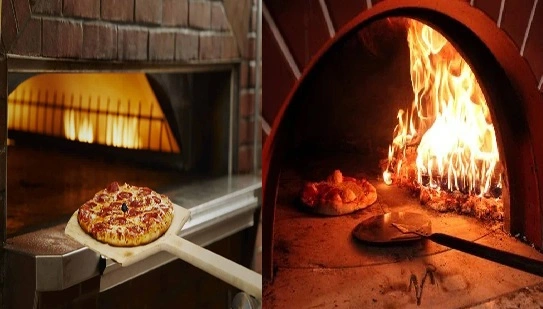When it comes to selecting a cutting board, the material you choose matters. Cutting boards serve as a kitchen workhorse, protecting your countertops while providing a sturdy surface for slicing, dicing, and chopping. Two popular choices in the USA are cherry wood and maple wood. Both are durable hardwoods that make excellent cutting boards, but they have notable differences in hardness, appearance, maintenance, and performance.
In this article, we’ll explore the key distinctions between cherry wood and maple wood cutting boards to help you choose the best one for your kitchen.
Understanding Cherry and Maple Wood
Both cherry wood and maple wood are classified as hardwoods, making them ideal materials for cutting boards because of their durability and resistance to wear.
- Cherry wood is known for its beautiful, rich color that deepens over time. It’s slightly softer than maple, offering a more knife-friendly surface.
- Maple wood, specifically hard maple, is famous for its strength, durability, and light color. It’s a classic choice for cutting boards and butcher blocks.
Let’s dive deeper into their features and how they compare.
1. Hardness and Durability
Hardness is a critical factor for cutting boards because it determines how well the surface withstands knife cuts without damaging your knives.
- Cherry Wood Hardness: Cherry wood has a Janka hardness rating of 950 lbf. It is softer than maple, which makes it more forgiving on knives. While it resists deep gouges and scratches, it’s more prone to showing minor knife marks over time.
- Maple Wood Hardness: Hard maple has a Janka hardness rating of 1,450 lbf, making it one of the hardest domestic hardwoods available. It’s incredibly durable and less likely to show knife marks or wear compared to cherry wood.
Winner: Maple Wood
If durability and resistance to cuts are your top priorities, maple wood is the clear winner. However, cherry wood’s slightly softer surface can help protect your knife blades.
2. Knife-Friendliness
The ideal cutting board strikes a balance between hardness and softness: hard enough to resist deep cuts, yet soft enough not to dull your knives prematurely.
- Cherry Wood: Cherry wood’s slightly softer surface makes it more knife-friendly than maple. The wood has a forgiving quality that reduces the wear on sharp blades.
- Maple Wood: While hard maple is extremely durable, its hardness can be slightly tougher on knife edges over time, especially for high-quality, razor-sharp knives.
Winner: Cherry Wood
For cooks who prioritize keeping their knives in top condition, cherry wood provides a gentler surface.
3. Aesthetic Appeal
Appearance is often a deciding factor for homeowners who want their cutting boards to double as serving trays or kitchen décor.
- Cherry Wood: Cherry wood boasts a stunning, rich reddish-brown color that darkens and deepens with age, creating a warm and luxurious look. Its fine, straight grain adds to its beauty, making it a statement piece in any kitchen.
- Maple Wood: Maple cutting boards have a light, creamy color with subtle, consistent grain patterns. This neutral look works well in both modern and traditional kitchens.
Winner: Depends on Preference
- Choose cherry wood if you want a warm, elegant look that will darken beautifully over time.
- Choose maple wood if you prefer a clean, light aesthetic that matches most kitchen styles.
4. Maintenance
Proper maintenance is essential to keep wooden cutting boards in great condition. Both cherry and maple require similar care, but their porosity and color can impact upkeep.
- Cherry Wood: Cherry wood is slightly more porous than maple, which means it may absorb moisture or odors more easily if not properly maintained. However, regular oiling with food-grade mineral oil helps maintain its integrity and stunning appearance.
- Maple Wood: Maple’s tight grain and non-porous surface make it more resistant to moisture and stains. Like cherry wood, it requires regular oiling to prevent drying or cracking.
Winner: Maple Wood
Maple wood’s lower porosity makes it easier to maintain and less prone to absorbing odors or liquids.
5. Stain and Odor Resistance
Cutting boards are exposed to various foods, including acidic ingredients, meats, and liquids that can stain or cause odors.
- Cherry Wood: Cherry’s natural color hides minor stains well, but its higher porosity can lead to absorption if spills are not cleaned promptly.
- Maple Wood: Maple’s dense, non-porous structure resists staining and odors better than cherry wood, making it ideal for frequent use with a variety of foods.
Winner: Maple Wood
If stain and odor resistance are major concerns, maple wood is the better option.
6. Cost
Price is often a deciding factor for many buyers.
- Cherry Wood: Cherry cutting boards tend to be slightly more expensive than maple due to their aesthetic appeal and slower growth rate.
- Maple Wood: Maple is widely available in North America, making it a more affordable and accessible option for cutting boards.
Winner: Maple Wood
If budget is a concern, maple wood offers better value without sacrificing durability.
Cherry Wood vs. Maple Wood: Key Comparison
| Feature | Cherry Wood Cutting Board | Maple Wood Cutting Board |
|---|---|---|
| Hardness | Softer (950 lbf) | Harder (1,450 lbf) |
| Knife-Friendliness | More forgiving on knives | Slightly tougher on knives |
| Durability | Durable, shows minor knife marks | Extremely durable and long-lasting |
| Aesthetic Appeal | Rich, darkening reddish-brown | Light, creamy with subtle grain |
| Maintenance | Requires regular oiling, more porous | Easy to maintain, less porous |
| Stain & Odor Resistance | Moderate, can absorb moisture | Excellent resistance |
| Cost | Slightly more expensive | More affordable |
Which Cutting Board Should You Choose?
- Choose Cherry Wood If:
- You want a cutting board with a rich, warm aesthetic that darkens beautifully over time.
- Knife-friendliness is a top priority, and you want to minimize wear on your blades.
- You’re willing to perform regular maintenance to keep the board in excellent condition.
- Choose Maple Wood If:
- You prioritize durability, stain resistance, and long-term performance.
- You prefer a light, neutral appearance that fits any kitchen style.
- You’re looking for a budget-friendly cutting board that is easy to maintain.
Final Thoughts
Both cherry wood and maple wood cutting boards are excellent choices, offering durability, functionality, and timeless beauty. If you value a warm, elegant aesthetic and knife-friendliness, cherry wood is the perfect option. However, if you need a highly durable, stain-resistant, and affordable board, maple wood is the superior choice.
By understanding the strengths of each material, you can confidently select a cutting board that meets your needs and enhances your kitchen for years to come.


